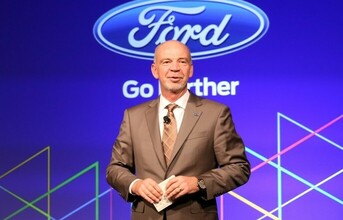
Exports form a big piece of Ford's India growth strategy as the company is looking to develop India as a key manufacturing base. "Currently, 25 per cent of vehicles and 40 per cent of the engine production output is being exported from the integrated manufacturing facility in Chennai. Ford India underpins the importance of bringing scale and flexibility to its manufacturing capabilities to deliver on the One Ford plan and produce world-class vehicles to meet growing international demand," Harris explains.
Reducing cost at the manufacturing level will be the key to produce competitive vehicles, particularly for the Indian market. So what is Ford India doing on this front? "Best practices in manufacturing and sustained efforts towards reducing the cost of ownership are key to producing competitive vehicles. Ford's global manufacturing standard and quality practices drive efficiencies, increases capabilities and lowers overall cost of production by using a standardised process in our factories of the future across the globe. Improved flexibility, process and quality improvement, investment efficiency, and efficient capacity utilisation are significant initiatives undertaken across all our plants in order to make Ford cars more competitive," Harris believes.
Ford's has state-of-the-art powertrain manufacturing facility in Maraimalai, Chennai, which your editor has had the opportunity to visit. It has been built to a ‘lean journey' approach to material logistics, taking advantage of a significant upgrade in automation and computer power. "A unique, ‘build-to-order' approach ensures that each vehicle is specifically built to an individual customer or dealer order, therefore making vehicles more competitive and the overall process more economical. The plant has been designed for efficiency, managing smaller inventories of commodities and components. This more compact approach allows warehousing closer to the assembly line, for greater speed and better efficiencies. In addition to these, key suppliers are clustered in an adjacent supplier park, and several new and current suppliers have been brought into the supplier park," Harris explains.
Of course, that is just one element of Ford India's three pronged Cost of Ownership vision: Use of efficient technology and parts design, service innovations and network expansion. With more service parts and components being produced locally in India by Ford as well as key suppliers, the need to import parts has decreased greatly while the availability of parts has increased. "We have worked closely with our growing supplier base to attain high levels of localisation on the products, thereby achieving competitive price points while maintaining high quality. Ford's superior ownership experience comes from continuous product innovation. With its laser-sharp focus on world class quality, Ford is able to offer peace of mind to its consumers with lesser number of servicing on its cars."
END


























